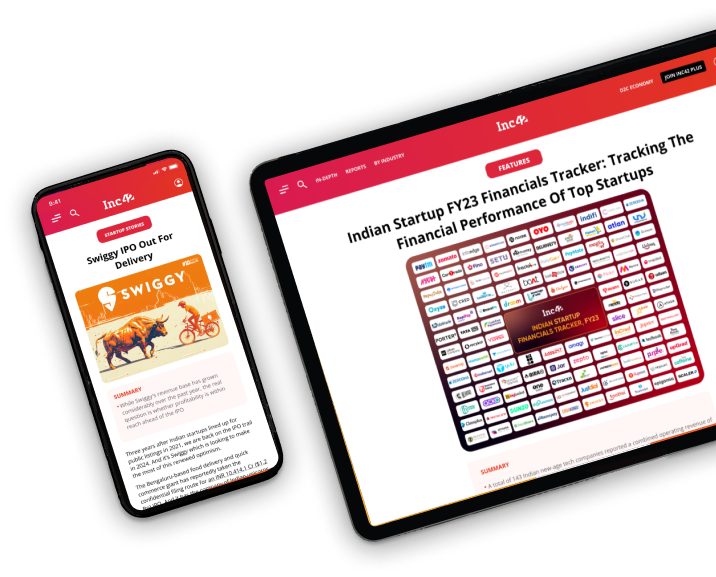
Web3 can decentralise education and make it more collaborative, inclusive, and adhering to data privacy
Web3 also has the potential to reduce the costs of education, making it more accessible to students from all backgrounds
Integration of AR/VR and metaverse tools with education can make learning a far more enriching experience
The edtech sector was much fancied during the pandemic. It was a refreshing disruption in the country’s education sector which has been crying out for reforms for a long time. The excitement, however, did not last long.
Post-pandemic, edtech found itself in distress due to various reasons. But the possibilities it offers remain immense. In fact, with newer technologies fast emerging, education is set for another overhaul.
Web3 or decentralised internet is one such tech that promises to bring about wholesale changes in education.
For the uninitiated, if Web1 was read-only and Web2 read and write, Web3 is read, write and own.
Decentralisation is at the heart of Web3. In other words, Web 3, which runs on blockchain technology, self-validates. Central authorities such as universities and schools will become redundant in the Web3 paradigm.
Ravi Chamria, cofounder and CEO of blockchain infra-automation platform Zeeve, defined decentralised education as a system that is more collaborative, efficient, personalised, inclusive and adhering to data privacy.
Today, everyone does not have equal access to education. Poor infrastructure, inadequate funding and high cost, among others, limit access to education. Centralisation– teaching at a pre-fixed place (schools and colleges) and time — is a disincentive too. Web3 assumes extra significance against this context as it democratises access to education.
“An open platform that can be accessed at minimal or no cost, anytime and from anywhere, is bound to address challenges and strengthen the education system worldwide,” said Arun Chinnachamy, Chief Technology Officer at edtech startup BrightCHAMPS.
Online education through videos and other tools has succeeded in distributing learning methods. YouTube is a prime example. And it is a welcome change. It detached learning from a fixed time and place. One can move through the courses at their own pace from anywhere in the world.
The flipside, however, is that such platforms are centralised too.
“The course completion rate for online courses averages around 15%. Also, if someone wants credit transfer to their traditional educational institutions, the curriculum must fit the prescribed learning path from the traditional education,” Chamria pointed out.
In a decentralised method, on the other hand, learners will have the liberty to choose personalised study paths.
“Instead of going to universities, students can join any role-specific DAO (decentralised autonomous organisation) such as developer DAO for learning to code, metrics DAO for blockchain analytics, vector DAO for learning to design, etc.,” Chamria said.
Learners will have digital wallets in Web3 which can store verifiable credentials from traditional institutions, internships, open-source projects, etc. While blockchain will give proof of skill, learners will own their credentials and control access to them, according to Chamria.
Chinnachamy said the adoption of newer technologies can actually help get past the brick-and-mortar way of education. It can reduce spending on books, uniforms and bags, among others. The reduction in cost will enable students from not-so-privileged backgrounds to access quality education, he said.
How Web3 Can Rediscover Learning Process
Education today revolves around traditional pedagogical techniques. It is teacher-centric and the method is textbook oriented. Far from satisfactory, the present system is ailing from many ills – high cost, uneven access, inadequate funding, poor infrastructure, and lack of uniformity, among others.
Web3 reimagines the learning process. From primary and higher education to girls’ education, literacy levels and tech skilling, Web3 can positively impact every aspect of education and learning. The possibilities are limitless. With the right support from authorities, the next-generation internet can revamp the learning process.
Girls’ education perhaps exemplifies the present-day limitations and possibilities in Web3. Lack of access has been the biggest hindrance to girls’ education, said Aparna Acharekar of Coto, a Web3 social community platform by women, for women.
She stressed that decentralisation and Web3 can open entire formal education. “It helps democratisation.”
Frictionless collaboration, besides clear ownership and better data privacy, is a basic tenet of Web3, according to Chamria. Students and teachers can come together on Web3 to amass and share knowledge.
“Think of it as a collective experience of MIT, Stanford, IITs and Ivy League universities available at our fingertips,” Chinnachamy said.
Web3 will help in the significant enhancement of core processes by virtue of the possibilities of contributions and collaboration across multiple stakeholders, i.e., students, faculty members, institutions, accreditation bodies, etc., said Raj Singh, Vice Chancellor, JAIN (Deemed-to-be-University)
Processes such as content authoring, reviewing, authentication & authorisation, and revision, among others, are poised to be completely reimagined in the Web3 paradigm.
Further, the integration of AR/VR and metaverse tools with education will make learning interactive and a far more enriching experience.
AR/VR tools help us understand and learn complex concepts in an immersive, interactive fashion.
“For instance, instead of learning that atoms are made of electrons, protons and neutrons, think of a simulation wherein the students experience it in a virtual world, taking practical assessments and earning a token for completing the course. The tokens earned can be universally verified too,” Chinnachamy pointed out.
Learning this way is more inclusive, diverse, goal-oriented and, more importantly, joyous.
Unlike the one-size-fits-all approach, Web3 will be all about personalised and curated experiences.
Students can also discover themselves, knowing the fact that Web3 is ultimately a trial-and-error process and become a part of a larger community, said Ankush Singla, co-founder of Coding Ninjas, an edtech platform to learn coding
From the point of view of educational institutions, Web3 can reduce the economic burden of setting up and maintaining infrastructure.
‘Web3 Will Not Replace Teachers’
Web3 is highly inspiring if one looks at it from a teacher’s angle too. A teacher can address live and virtual students simultaneously. The high-quality content can be made available in various formats or repurposed for other learners.
“Web3 will not replace teachers. Instead, it will empower them with the power to give each learner a customised, high-quality education,” said Chamria.
Web3 will make it easier for teachers to create a course and own the materials, Chinnaswamy said, adding that students on their part will be able to control what and when they learn. They can also validate their learnings and earn recognition for the same.
How Web3 Can Disrupt Edtech
Web3 and its immersive tools such as AR/VR are envisioned to disrupt edtech.
“Shifting to Web3 will not only impact the current functioning of the edtech industry but also enable large-scale content creation by users. The technology is currently positioned as a mass tech movement with its core pillars being metaverse, crypto, and blockchain,” said Singla.
The democratic nature of Web3 and the openness of data will make it possible for a startup to compete with a big player on an equal footing, Chinnachamy said.
“As education becomes cheaper and more interactive, it’s likely to witness greater participation from students across the globe. This in turn will make the platform more competitive for all stakeholders, further bringing down pricing. A win-win for all!” he added.
Beware, It Is Not All Roses
Web3 enthusiasts are for sure gung-ho about the disruption the next-gen internet is capable of. But challenges cast a shadow over this rosy picture. Infrastructure challenges are so enormous that mainstream adoption of Web3 looks far too distant. It is pertinent to note here that even edtech startups do not find Web2 as seamless as they would like.
Talvinder of Pragmatic Leaders, put it pithily: “Unfortunately, Web3 is still a wild west and infrastructure is still not stable and standardised to make all of the above a reality.”
Pragmatic Leaders is an online institute to upskill early and mid-career professionals in product management.
But the challenges that Web3 solves are different from those solved by Web2, he quickly added.
Chinnachamy concurred: “Web3 is an evolving technology and is not going to replace Web2, contrary to the common perception. It is expected to be an amalgamation of both technologies, which will create a unique value proposition.”
Web3 relies on centralised servers as a backup and to build resilience in the network. There is scepticism in some quarters that the decentralised infra depends on peer-to-peer (P2P) storage features which may not be a good match for Web2 providers such as AWS.
“We are somewhat away from the decentralised network becoming reliable enough. In the meantime, the other aspects of the Web3 network are improving,” Talvinder noted.
The P2P storage is essential only for sensitive data where the pieces of data are stored across the nodes of the blockchain network, according to Chinnachamy.
It prevents data loss and theft but is also slow and unreliable unless the network is large enough.
“P2P storage is not going to replace cloud/traditional storage mediums. Large files or low sensitive data like class videos will continue to be stored in providers like AWS, GCP, Azure, etc.”
He cited an example of textbook ownership. For example. Its metadata can be tracked in decentralised networks or in a blockchain, but the book itself will be stored in cloud storage, he clarified.
“So each of them have their own use cases and are not competing with each other.”
Yet another misgiving about Web3 possibilities in education is that it can defeat the very purpose of universal access. This lack of trust arises from metaverse integration tools such as AR/VR which can be obscenely expensive for some who may need it the most.
“Mainstream adoption of technologies happens in education when they fit the 3As – accessible, affordable, accreditable. AR/VR fails on 2 out of 3 As, and hence are away from mainstream adoption,” said Talvinder Singh, CEO & Cofounder, Pragmatic Leaders.
Chinnachamy, on the other hand, sounded an eternal optimist. He is sure that AR/VR will hit the mainstream within this decade and revolutionise the way children in developing countries learn.
He is convinced that decentralisation in the metaverse will make it accessible to everyone across the globe, irrespective of race, gender and country.































 Ad-lite browsing experience
Ad-lite browsing experience